A Unique Native American Map Everyone Should See
Ellen Lloyd - AncientPages.com - There are currently 574 federally recognized Native American tribes living scattered in different states of the United States.
The number of tribes was much greater before the arrival of the Europeans. Coming into contact with the Europeans had fatal consequences for Native Americans.
This unique map displays all Native American tribes. Credit: Aaron Carapella – Tribal Nations Maps
Native Americans have always lived close to nature, which played an essential role in traditions and religious beliefs.
Native Americans’ Values, Traditions, Customs, And Religious Beliefs Were Insignificant To The White People
“They defined themselves by the land, by the sacred places that bounded and shaped their world. They recognized a unity in their physical and spiritual universes, the union of natural and supernatural. Their origin cycles, oral traditions, and cosmologies connected them with all animate and inanimate beings, past and present.” 1
It was their way of life that every generation adapted. Being Native American means being part of nature. Native Americans “acknowledged the earth’s power and the reciprocal obligation between the hunter and the hunted. They acted to appease the spirits who endowed the world.
Native Americans celebrated the earth’s annual rebirth and offered their first fruits. "These customs were common not only to Native Americans but also Pagans in ancient Europe. People respected Mother Earth more in than past than modern people do today. Native American tribes “used songs and ritual speech to modify their wold while physically altering that landscape with fire and water, brain and brawn. They did not passively adapt, but responded in diverse ways as individuals and groups to refashion environments to meet their cultural and material desires. “ 1
Then, the white men came, and everything changed. Many native Americans who encountered the white people for the first time were friendly and curious. Not all tribes had this attitude, but certainly many. But white men had not come to make new friends. He was there to conquer and get their land.
Suddenly, most Native American tribes realized the newcomers threatened their land, their values, and their traditions. It was no longer o matter of living in harmony with Mother Nature, but a question of survival.
Native Americans have always held nature in high regard. Credit: Adobe Stock - ginettigino
“The pace of change in Native American cultures and environments increased dramatically with Euroamerican contact. Old World pathogones and epidemic diseases, domesticated plants and livestock, the disappearance of native flora and fauna, and changing patterns of native resource use altered the physical and cultural landcape. Nineteents-century removal and reservation policies reduced the continental scope of Indian lands to islands in the stream of American settlement. Reservation lands were largely unwanted or remote environments of little economic value.” 1
In a study, scientists from Northwestern University reported that one-third of Native Americans live in poverty, and native Americans are the poorest ethnic group in the United States. The quality of life in native American reservations is terrible. “Often, three generations of a single family live in one cramped dwelling space. The packed households frequently take in tribe members in need as well. Additionally, most residences lack adequate plumbing, cooking facilities, and air conditioning.“ 2
Today, many Native Americans are cautious when they speak to white people, and who can blame them? History has taught Native Americans to be on guard when they come in contact with people.
The Forgotten Lost Native American Tribes Few Talk About
Many Native American tribes vanished as a result of interaction with newcomers. Today, these tribes are rarely spoken of, but one man decided to keep their memory alive.
Aaron Carapella in Oklahoma who is as he self says, a "mixed-blood Cherokee" has done a remarkable job creating a map of all the lost native American tribes. Carapella, a self-taught mapmaker, spent a decade studying history books and library archives to gain the information he presents today. He spoke to tribal and visited reservations as part of research for his map project, which began as pencil-marked poster boards on his bedroom wall.
Credit: Aaron Carapella – Tribal Nations Maps
Carapella’s map is extraordinary and of great value to history students as it displays the original and commonly known names of Native American tribes. One quick look at the map is enough to see America is the land of Native Americans. This fact cannot and should not be erased from history.
“This map of how our nations looked before contact with outsiders offers our unique perspective as Indigenous Americans. It can be displayed on the walls of our tribal buildings and around our communities to reflect our pride in how we define ourselves, and to give encouragement to tribal members to never forget who we are, or where we belong, Carapella explains on his website, where anyone can buy the map if interested. Carapella's map depicts more than 600 tribes, many now forgotten and lost to history.
We can end this by saying - this is a unique Native American map everyone should see!
Updated on August 7, 2024
Written by - Ellen Lloyd – AncientPages.com
Copyright © AncientPages.com All rights reserved. This material may not be published, broadcast, rewritten or redistributed in whole or part without the express written permission of AncientPages.com
Expand for references- Lewis, David Rich. "Native Americans and the Environment: A Survey of Twentieth-Century Issues." American Indian Quarterly19, no. 3 (1995): 423-50
- Amanda J Godfrey - Native Americans And Life On Reservations, BorgenProject.org
- Aaron Carapella – Tribal Nations Maps
More From Ancient Pages
-
 Missing Pieces Of The Magnificent Golden Tree Of Lucignano Discovered
Archaeology | Nov 6, 2023
Missing Pieces Of The Magnificent Golden Tree Of Lucignano Discovered
Archaeology | Nov 6, 2023 -
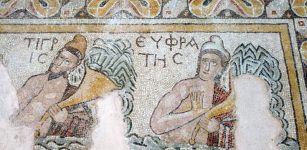 More Beautiful Mosaics In The Ancient City Of Hadrianopolis In Northern Turkey
Archaeology | Sep 28, 2022
More Beautiful Mosaics In The Ancient City Of Hadrianopolis In Northern Turkey
Archaeology | Sep 28, 2022 -
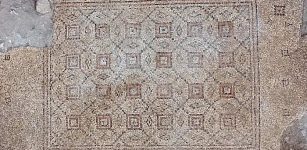 A 1,600-Year-Old Mosaic Accidentally Unearthed In Ancient City Of Yavne, Israel
Archaeology | Apr 26, 2021
A 1,600-Year-Old Mosaic Accidentally Unearthed In Ancient City Of Yavne, Israel
Archaeology | Apr 26, 2021 -
 Mysterious Handprint And Cry For Justice From Beyond The Grave
Featured Stories | Jan 2, 2020
Mysterious Handprint And Cry For Justice From Beyond The Grave
Featured Stories | Jan 2, 2020 -
 Fragarach: Supernatural Sword That Controlled Winds, Cut Through Wood, Metal And Bricks In Irish Myths And Legends
Celtic Mythology | May 14, 2020
Fragarach: Supernatural Sword That Controlled Winds, Cut Through Wood, Metal And Bricks In Irish Myths And Legends
Celtic Mythology | May 14, 2020 -
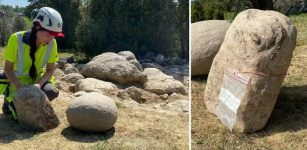 Unusual Discovery Of A Viking Age Phallic Stone In Tystberga, Sweden
Archaeology | Jun 12, 2023
Unusual Discovery Of A Viking Age Phallic Stone In Tystberga, Sweden
Archaeology | Jun 12, 2023 -
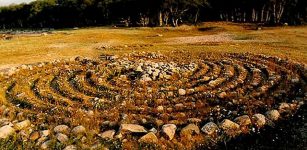 Secrets Of Bolshoi Zayatsky Island – Mysterious Stone Labyrinths Of Unknown Purpose And Origin
Featured Stories | Oct 21, 2014
Secrets Of Bolshoi Zayatsky Island – Mysterious Stone Labyrinths Of Unknown Purpose And Origin
Featured Stories | Oct 21, 2014 -
 Extraordinary Gold Pendant With Cross Re-Writes Anglo-Saxon History – It’s One Of The Oldest Symbols Of Christianity Ever Found In East Anglia
Archaeology | Dec 11, 2017
Extraordinary Gold Pendant With Cross Re-Writes Anglo-Saxon History – It’s One Of The Oldest Symbols Of Christianity Ever Found In East Anglia
Archaeology | Dec 11, 2017 -
 Red-Headed Alevi In Kurdistan Could Be Guardians Of Watchers’ Secret Knowledge And Shed Light On The Excalibur Legend
Civilizations | Jan 31, 2018
Red-Headed Alevi In Kurdistan Could Be Guardians Of Watchers’ Secret Knowledge And Shed Light On The Excalibur Legend
Civilizations | Jan 31, 2018 -
 Extraordinary Bronze Age Jewelry Hoard Discovered In A Carrot Field In Switzerland
Archaeology | Oct 18, 2023
Extraordinary Bronze Age Jewelry Hoard Discovered In A Carrot Field In Switzerland
Archaeology | Oct 18, 2023 -
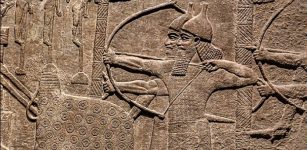 Tiglath Pileser III: Neo-Assyria’s Strong King Who Built A Mighty Empire
Featured Stories | May 2, 2019
Tiglath Pileser III: Neo-Assyria’s Strong King Who Built A Mighty Empire
Featured Stories | May 2, 2019 -
 Hidden 15th-Century Text On Medieval Manuscripts – Discovered By Students
News | Nov 23, 2020
Hidden 15th-Century Text On Medieval Manuscripts – Discovered By Students
News | Nov 23, 2020 -
 SPQR Was A Symbol Of The Roman Republic
Ancient History Facts | Dec 4, 2017
SPQR Was A Symbol Of The Roman Republic
Ancient History Facts | Dec 4, 2017 -
 Are Climate-Related Calamities Erasing Illinois’ Cultural History? An Archaeologist Explains
Earth Changes | Dec 27, 2024
Are Climate-Related Calamities Erasing Illinois’ Cultural History? An Archaeologist Explains
Earth Changes | Dec 27, 2024 -
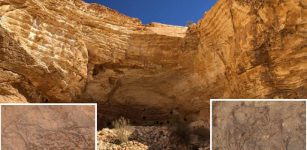 Remarkable Ancient Animal Engravings Discovered In Unknown Cave In Sinai
Archaeology | May 1, 2020
Remarkable Ancient Animal Engravings Discovered In Unknown Cave In Sinai
Archaeology | May 1, 2020 -
 What Were Victorian Bathing Machines?
Ancient History Facts | Jun 9, 2018
What Were Victorian Bathing Machines?
Ancient History Facts | Jun 9, 2018 -
 Viking Artifacts Discovered In Canada Are More Mysterious Than First Thought
Featured Stories | Apr 3, 2024
Viking Artifacts Discovered In Canada Are More Mysterious Than First Thought
Featured Stories | Apr 3, 2024 -
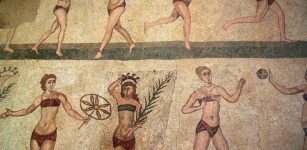 Ancient Roman Women Wore Bikini In 1400 B.C.
Ancient History Facts | Jul 17, 2017
Ancient Roman Women Wore Bikini In 1400 B.C.
Ancient History Facts | Jul 17, 2017 -
 Secrets Of The Cathars – Mysterious Manuscript Of Jesus And His Pre-Flood Language
Featured Stories | Jan 18, 2019
Secrets Of The Cathars – Mysterious Manuscript Of Jesus And His Pre-Flood Language
Featured Stories | Jan 18, 2019 -
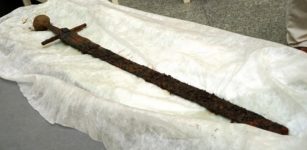 Unique Medieval Perfectly Preserved Sword Found In The Odra River, Poland
Archaeology | Aug 12, 2020
Unique Medieval Perfectly Preserved Sword Found In The Odra River, Poland
Archaeology | Aug 12, 2020



